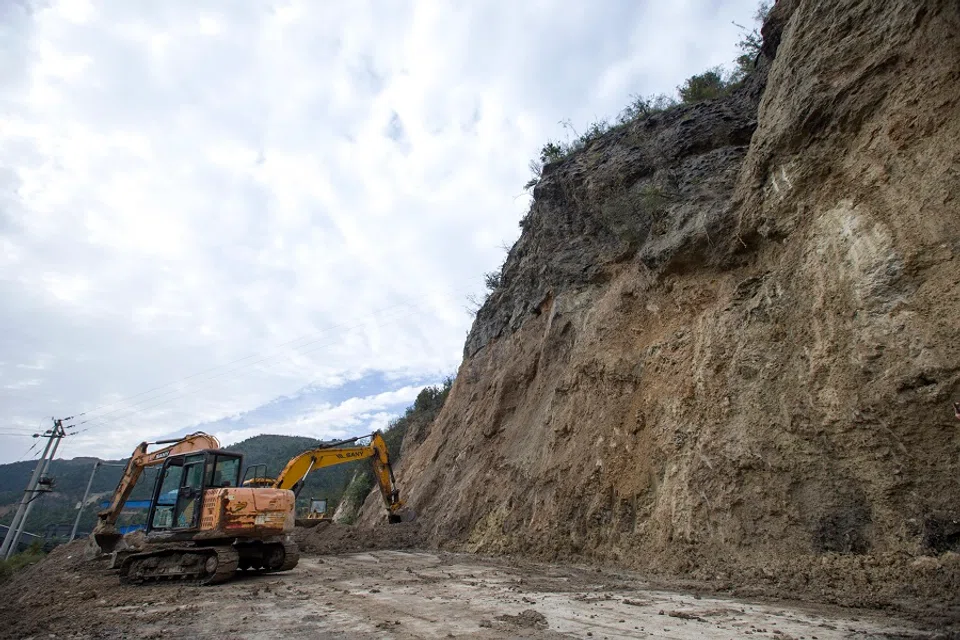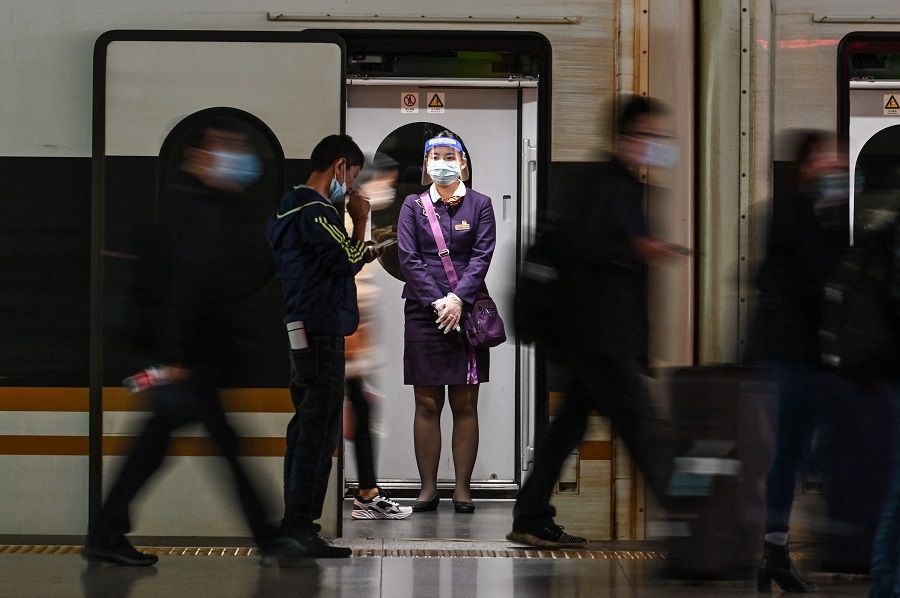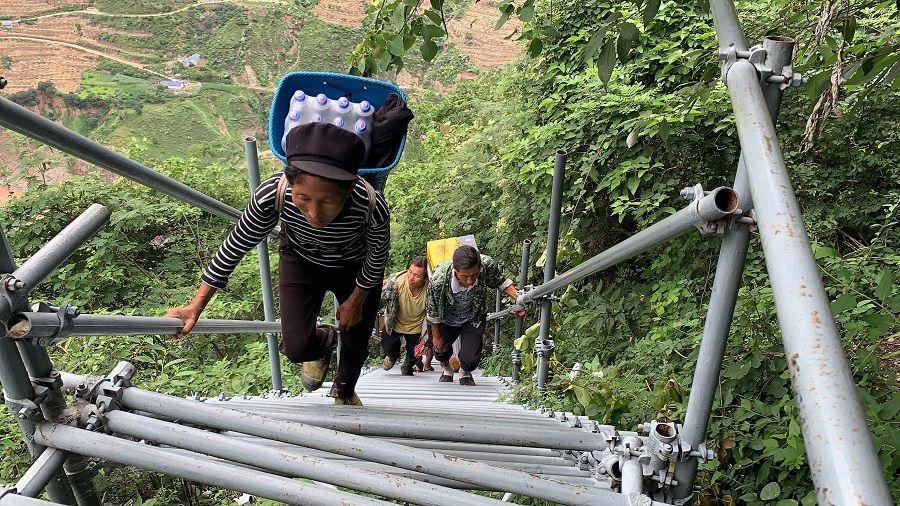China's mammoth task of upgrading its transport system

Clothing, food, shelter and transport make up humankind's basic needs. When a country's economy reaches a certain size, with hard work, most people can live a life without worrying about food, clothing and shelter. But short of owning a car, a convenient means of transport is not something an individual can achieve on his own. In addition to improving transport infrastructure, governments around the world are enhancing traffic management systems to ensure a good transport system and smooth traffic.
For a country like China with a vast territory and a large population, the significance of accelerating transportation construction is even more important. Without a comprehensive transport system and network, development is impossible. Since reform and opening up, the rapid development of transportation in China has provided strong support for its economic and social development.
Making headway on railway networks
Prior to the reform and opening up policy that started in late 1978, China's highways only spanned 890,000 km. There was not a single expressway then. The length of railways totalled only 52,000 km, which meant each Chinese person was only entitled to about 5.4 cm of railway, which was far less than the length of a cigarette.
After 40 years of rapid development, China's highways came up to 5 million km as of 2019, and its expressways have reached 149,600 km, overtaking the US and ranking first in the world. By 2020, China's railways reached 146,000 km, with high-speed railways spanning 38,000 km and accounting for over 70% of the world's high-speed railways.
...the pace of expressway construction in China was not fast enough to meet actual demand.
Today, China is still ramping up its efforts in transportation construction. The goal of becoming a strong power in the transportation sector seems achievable. China's investment in fixed assets in the transport sector was over 3.2 trillion RMB in 2019, and has been maintained at this level over the years.
In 1988, China's first expressway was built in Shanghai. While it was only 18 km long, it was still the first step China took towards the construction of expressways. Following this, expressways in various regions of China sprung up one after the other. However, the pace of expressway construction in China was not fast enough to meet actual demand. Traffic quickly became congested and the four-lane expressways had to be expanded into six- or even eight-lane expressways. In some cases, another expressway going in the same direction even needed to be built.

In October 2013, highways were finally put into operation in China's last remaining county that did not have them - Tibet's Medog County. Since then, highways have been running through all of China's 2,800 counties. Six years since then, highways also became available in China's last remaining village without them - Abuluoha village in Sichuan's Liangshan Yi Autonomous Prefecture.
As most villagers do not own cars, buses have become a key mode of transport for farmers to visit relatives and friends or to buy agricultural materials and daily necessities.
As of late 2019, China's rural highways (highways connecting counties and villages and between villages) totalled 4.2 million km in length. All of China's qualified townships and organised villages have paved roads as well. By the end of August 2020, all of China's qualified townships and organised villages had bus services, making it convenient for rural residents to travel. Before this, villages across China did not have highways. Even if they did, they were either dirt or sand roads which became dusty when it was sunny or muddy when it rained. Even if villagers had excess agricultural products, they were unable to sell them outside their villages to earn money.
The improved rural transportation conditions in various regions today have enabled farmers to sell their agricultural products in getting out of poverty and even becoming rich. As most villagers do not own cars, buses have become a key mode of transport for farmers to visit relatives and friends or to buy agricultural materials and daily necessities.
Because going out was too difficult in the past, many villagers never used to leave the village, living completely self-sufficient and primitive lifestyles. If they fell sick, they could only endure it or succumb to the illness if they could not. Because there was simply no means to receive medical treatment. In fact, Chinese rural residents used to have a lower life expectancy than urban residents in the past.
Improving transportation links in Southwest China
Southwest China is home to the Tibetan, Qiang, and other ethnic minority groups. Because of its extreme topography, residents have, for thousands of years, ziplined from bamboo-made cables across the rivers if they wanted to travel from place to place. But this poses a major safety risk, and villagers were known to have fallen into the rivers every year. Apart from these communities in China, only the indigenous Americans in the Peruvian Andes are known to rely on ziplining.
While the central and local governments wanted to improve the situation before, due to financial constraints, little progress was made in building bridges to replace ziplines. Some years ago, the central and local governments resolved to rectify the situation and finally finished constructing bridges across Nujiang, Jinsha River and Lancang River. This radically changed the transportation system that has prevailed for centuries in these areas. Ziplines have become a thing of the past.
Now, there are only a few remaining villagers who still live in the mountains. The majority of villagers who have moved to government-built resettlement homes have changed their identities from villagers to residents.

In May 2020, 344 villagers of the famed "cliff village" (Atulie'er Village) in Sichuan's Liangshan Yi Autonomous Prefecture left their homes. In the past, the only way to get in and out of this mountain village was to climb a 12-level 218-steps rattan ladder up the 800-metre-high cliff, which was how the village got its name. In 2017, while a 2,556-step steel staircase was built to replace the rattan ladder, it only made the mammoth task of scaling the mountain a little safer. Now, there are only a few remaining villagers who still live in the mountains. The majority of villagers who have moved to government-built resettlement homes have changed their identities from villagers to residents. In the last vestiges of the original village, the agriculture, breeding and tourism industries of old have also undergone massive changes as a result of the relocation.
Investments in similar projects, regardless of the costs, are worth it. Otherwise, the difficult living conditions of these villagers will never be improved, and "building a moderately affluent society in all aspects" would be all talk.
Alleviating traffic congestion
In addition to improving rural transportation, the Chinese Ministry of Transport implemented many new policies to improve traffic conditions between urban and rural areas. For example, as of 2017, China abolished road tolls at all of its Class II highways, reducing toll mileage by 141,600 km. This not only greatly reduced the burden on drivers, but also improved traffic efficiency.
Another important measure would be the waiver of toll fees during the holidays, which has been in place since China's National Day in 2012. With the introduction of this policy, more cars were on the roads during the holidays, and this greatly profited the tourism sector in various regions of the country. Profits accrued from tourism is far more than that collected from toll. This is a win-win measure that has met the people's approval.
Since 1 January 2020, China has removed all expressway toll booths at provincial borders and switched to using an electronic toll collection system. In this way, cars are able to move along quickly without stopping. Road transport efficiency has thus greatly improved, much to the approval of car owners across the country.

For a long time, toll collectors from various traffic management and road administration departments have appeared on highways between urban and rural areas in China, randomly charging passing trucks on the grounds of overloading. This is because relevant departments in some regions did not set a proper fee structure. Many truck drivers were miffed by this practice and called these toll collectors "highway bandits" (车匪路霸). The Chinese government had to work with public security and highway departments to put an end to such illegal practices.
With the rapid development of high-speed rail, to cater to the needs of different groups of people, China still retains 81 pairs of slow trains. While this may seem a little outdated, they are the main means of transportation for residents living in the remote areas of Sichuan's Liangshan Yi Autonomous Prefecture, as well as Northwest and Northeast China. Residents living in these regions rely on these slow trains to go to the market, see the doctor, go to school, visit relatives and go to work.
These slow-moving trains connect the villagers to the outside world, and have not only improved the travel conditions of the people in poverty-stricken areas and brought great convenience to their lives, but also brought them business opportunities and increased their income. The lowest fare of these slow trains is only 2 RMB, and the train is also equipped with cabins where livestock can be kept so that the local people can easily travel to the markets to trade.
As for highways in the villages, some are clearly not up to par - there are neither road shoulders nor protective or drainage facilities.
While travelling in China has become more convenient, its transport system is far from perfect. For example, the sky-high towing fees on the expressways. Although this has invited public outrage from time to time, the problem still persists despite administrative punishment. This is clearly related to monopolies.
Additionally, the number of private cars in the cities far exceed the number of parking lots to the point where finding one can sometimes be a frustrating experience. As for highways in the villages, some are clearly not up to par - there are neither road shoulders nor protective or drainage facilities. There are no passing bays as well, and the roads are a mere three metres wide. Villagers are naturally unsatisfied with the situation.
Apart from these issues, measures to reduce congestion such as license plates auctions and end-number license plate policies have also reduced the convenience of travelling by car. Such problems can only be solved through further development.
